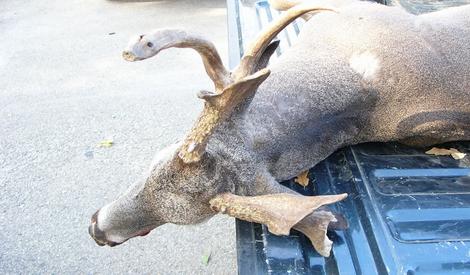Non-typical white-tailed bucks are odd. That is exactly why they are called non-typicals. The 4 1/2 year old white-tailed buck featured in these photos was found dead, hit by a vehicle along a stretch of road in Milam County, Texas. By looking at the photos, it is easy to determine that the antlers on the buck are not typical, but what causes bucks to have such odd antler characteristics? Well, deciding on a specific reason for the presence of non-typical antlers is never straight forward because there can be several causes. A past injury, genetics, and the overall health of the deer can impact antler conformation. In addition, hormone levels are believed to contribute to large non-typical, palmated racks. The road-killed buck featured here has palmated G1s and could have had more, but it is difficult to determine since portions of it’s antlers where broken off during the accident.
Which one of the factors is to blame for the deer’s odd antlers? I do not know, but I know that unusual circumstances such as internal injuries or even the drastic reduction of a buck’s food supply can prevent a white-tailed buck from properly metabolizing its food. The result could be the production of non-typical antlers, including palmation. So the next time you see a big non-typical buck, realize that the animal has likely had some kind of virus, illness, or injury. Bucks injured during a fight or otherwise can exhibit non-typical antler growth, even in subsequent years although the buck continues to grow new antlers. It’s odd.




That is a wacky non-typical buck. It was lucky to have found it.